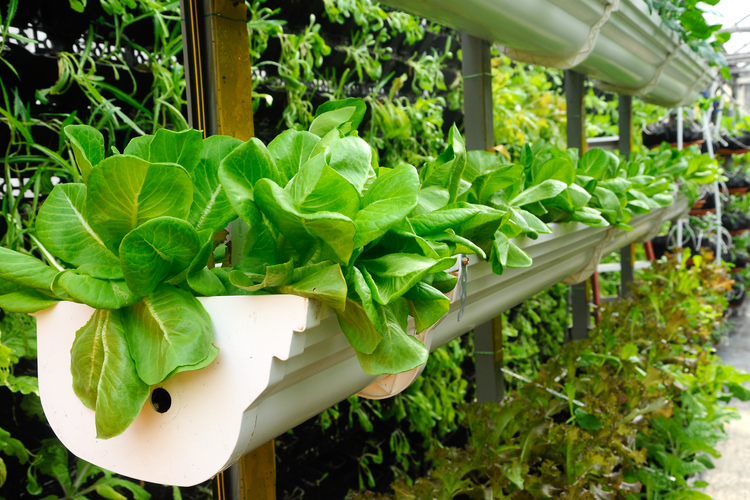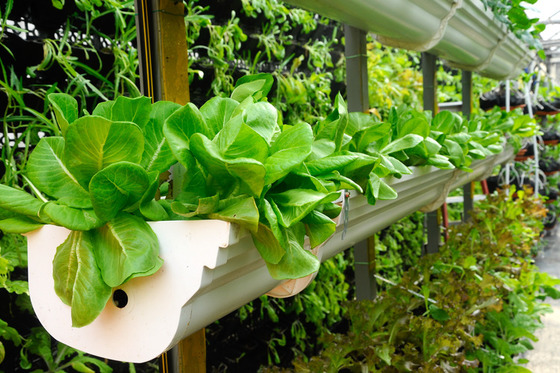Welcome to Thomas Insights — every day, we publish the latest news and analysis to keep our readers up to date on what’s happening in industry. Sign up here to get the day’s top stories delivered straight to your inbox.

In 2017, the agriculture industry — one of the largest sectors in the country — contributed $1.053 trillion to U.S. gross domestic product, making up a 5.4% share.
To respond and adapt to changes in consumer demand, sustainability and environmental concerns, and technological advances, the supply chain has evolved rapidly in recent years, tapping into new methods of doing business to help ensure success into the future.
To keep up with an ever-shifting market, the industry has zeroed in on a few key areas.
Digital and Analytics Technologies
New technologies are allowing leading agriculture players to add value at various stages of the supply chain — a major boon for a notoriously complex industry.
With increasingly advanced data collection and analysis capabilities, agriculture professionals now have valuable insight into a huge range of data — from weather to agronomy to market price volatility. This data can be used in various ways to increase efficiency and streamline the supply chain.
The use of digital twins, for example, has become more prevalent. These act as digital replicas, or “twins,” of a real-life, physical supply chain. This allows managers to simulate specific activities or operations, test responsiveness to demand, and run optimizations without having to touch the actual supply chain.
From there, managers can compare the physical chain with its digital twin to isolate specific problems, highlight areas for improvement, and determine what works and what doesn’t. This gives supply chain professionals more options than ever for determining the most effective and efficient courses of action.
Robotics, too, are helping to create a more efficient, profitable agriculture supply chain. By automating certain processes — typically very repetitive or mundane ones — companies can free up employee time to focus on other, more complex tasks.
For example, automated weeding machines can straddle multiple rows of crops at a time, mechanically removing weeds without the need for human labor. This can also be done in tandem with the application of crop-protection products, creating one simple, streamlined process.
Social and Environmental Standards
As consumers become increasingly concerned with the social and environmental implications of their purchases and regulations become more stringent, the agriculture supply chain has implemented various guidelines to help ensure ethical processes end-to-end.
More companies are committing to enhanced sustainability initiatives and increased transparency in their operations. Not only does this help provide consumers with more insight into the origins of their products, but it also strengthens collaboration and communication among different businesses and actors in the supply chain.
For example, Justin’s, the nut butter and snacks company, recently upgraded all of the sub-ingredients in its nut butters to be organic — leaning on suppliers to achieve these sustainability goals. Its parent company, Hormel Foods, requires all suppliers to adhere to certain principles to ensure all purchases are compliant with its sourcing policy.
Although some key sustainability challenges — including water use, worker conditions, and deforestation — are often considered processing issues, the supply chain itself is playing an increasingly important role in ensuring ethical processes.
At the sourcing stage, for instance, it’s crucial to determine where, how, and how much of a certain material should be gathered — and what effect this may have on the environment, both regionally and globally.
Worker treatment, benefits, and pay come into play here as well, with consumers increasingly demanding social responsibility from the companies they do business with.
While it can be exceedingly difficult maintaining end-to-end visibility into today’s complex supply chains — which often span various locations, cultures, and time zones — advanced technologies such as blockchain have given agriculture supply chain professionals access to a wealth of new insights. This can even allow for near-real-time visibility into the movement of goods, the time and location of sourcing, worker identity, and material quality — to name just a few examples.
Direct-to-Consumer Model
As the COVID-19 crisis continues to alter the food and agricultural landscape, companies across the globe have been forced to adapt to meet shifting demand.
As many restaurants closed, for example, farmers who had relied on them for wholesales had to switch to a direct-to-consumer (DTC) model, allowing consumers to purchase food without setting foot into a store. While this can be profitable in the short term, farmers will need to create new strategies to ensure continued success. Experts also say it’s too soon to tell if the uptick in direct-to-consumer sales can be maintained.
Although COVID-19 has brought it to the forefront, the DTC model was already growing in popularity in recent years. For instance, subscription-based community-sourced agriculture (CSA) programs have become a solid resource for consumers seeking fresh, local produce, while allowing farmers to better compete with wholesalers.
Meal kits, as well, such as those produced by Blue Apron and Hello Fresh, have come into the spotlight. Consumers are seeking fresh products that can be delivered directly to their door, making mealtime easier and quicker than ever.
While there has been some concern regarding the potential of intermediaries losing out as the DTC model rises in popularity, very few companies have actually eliminated all intermediaries between producer and consumer.
Lessons to Learn from the Agriculture Supply Chain
As new technologies, shifting consumer demands, and a changing market transform supply chains across the globe, many companies are seeking new ways to stay ahead.
The agriculture industry has shown that increased focus on sustainability, advanced technology, and the DTC model all have the potential to create more value while improving social and environmental practices as well as heightening company reputation in an increasingly competitive, crowded market.
Better transparency, in particular, will likely play a pivotal role in shaping the supply chains of tomorrow, as consumers look to support companies that promote values similar to the ones they hold. The values include organic farming practices, fair pay for workers, and cruelty-free operations. The companies that get this right by establishing future-forward, socially, and environmentally responsible infrastructure will be better positioned for success than their competitors.
Looking Ahead
The agriculture supply chain is changing rapidly, and in light of the COVID-19 crisis, today’s professionals are facing new, complex challenges.
As the U.S. economic and cultural landscape continues to shift, companies will likely be tapping into advanced technologies and digital tools more than ever to help them remain as nimble and agile as possible as we move into the future.
Want to Grow Your Knowledge on This Topic?
- Agricultural equipment sourcing is growing. Find out why here.
- Find out how to employ digital twins for supply chain success.
- Is blockchain the answer to supply chain success? Uncover the answer here.
- Discover how farmers are reaping the benefits of big data in agriculture.
Image Credit: Aisyaqilumaranas / Shutterstock.com


